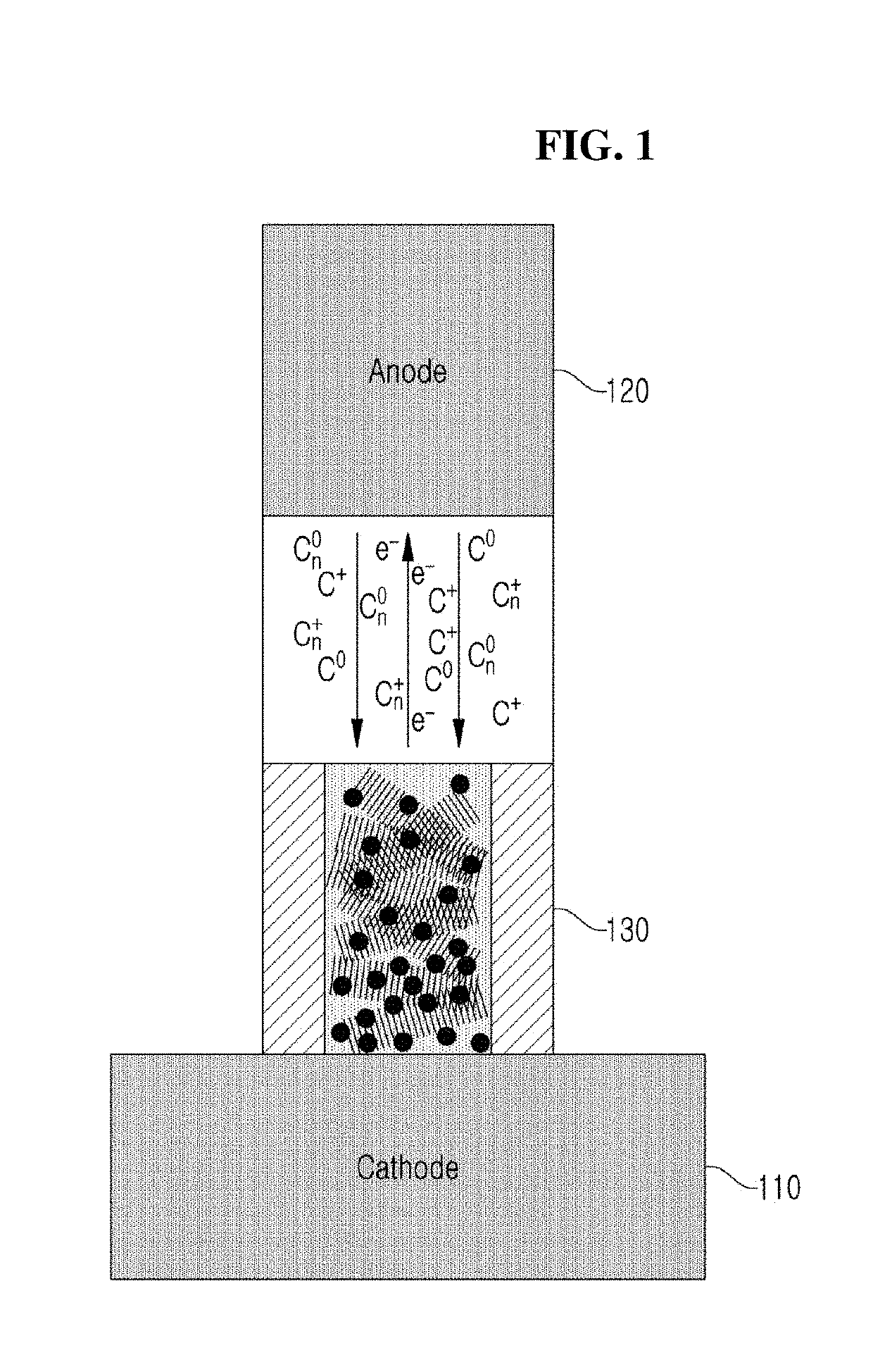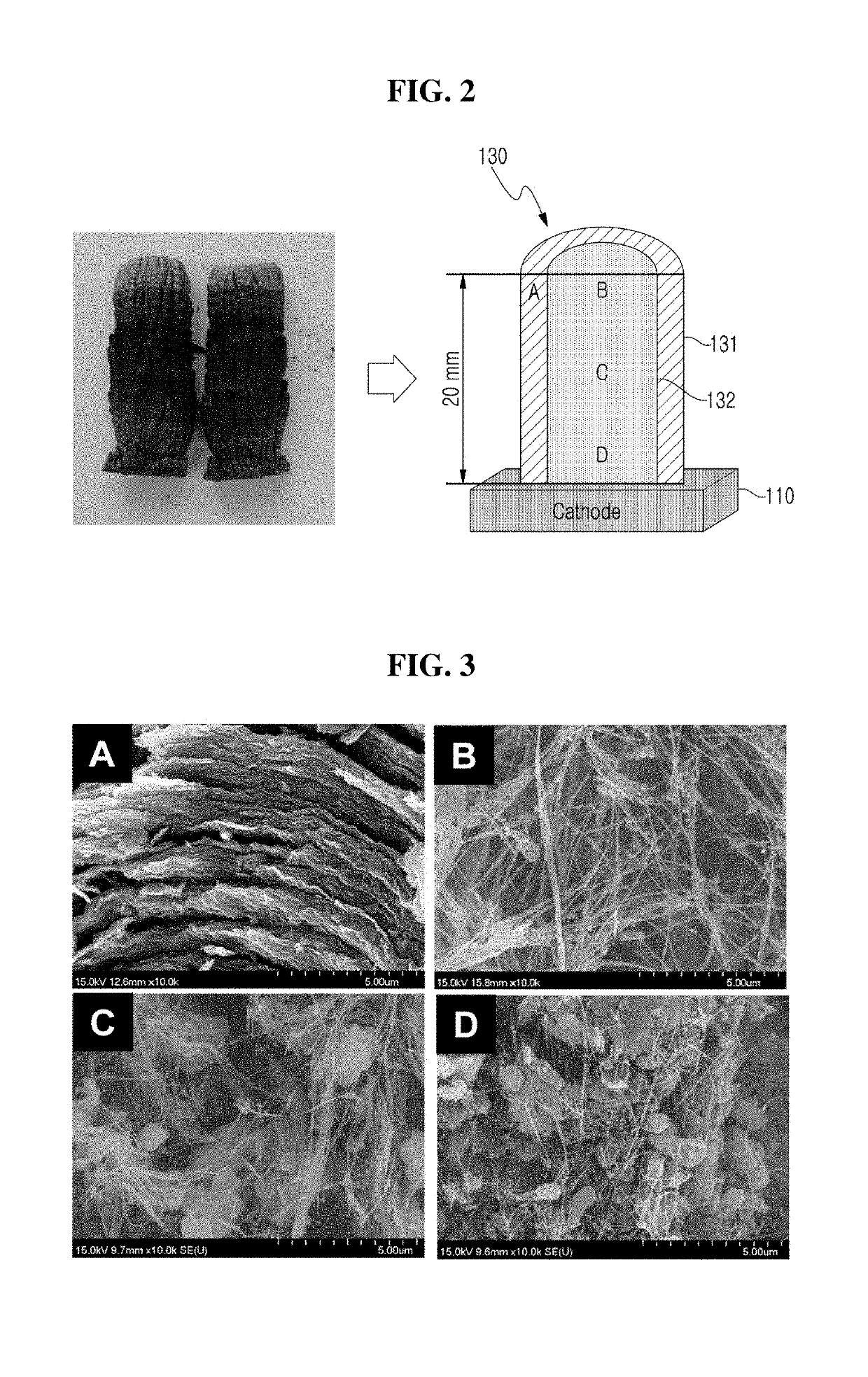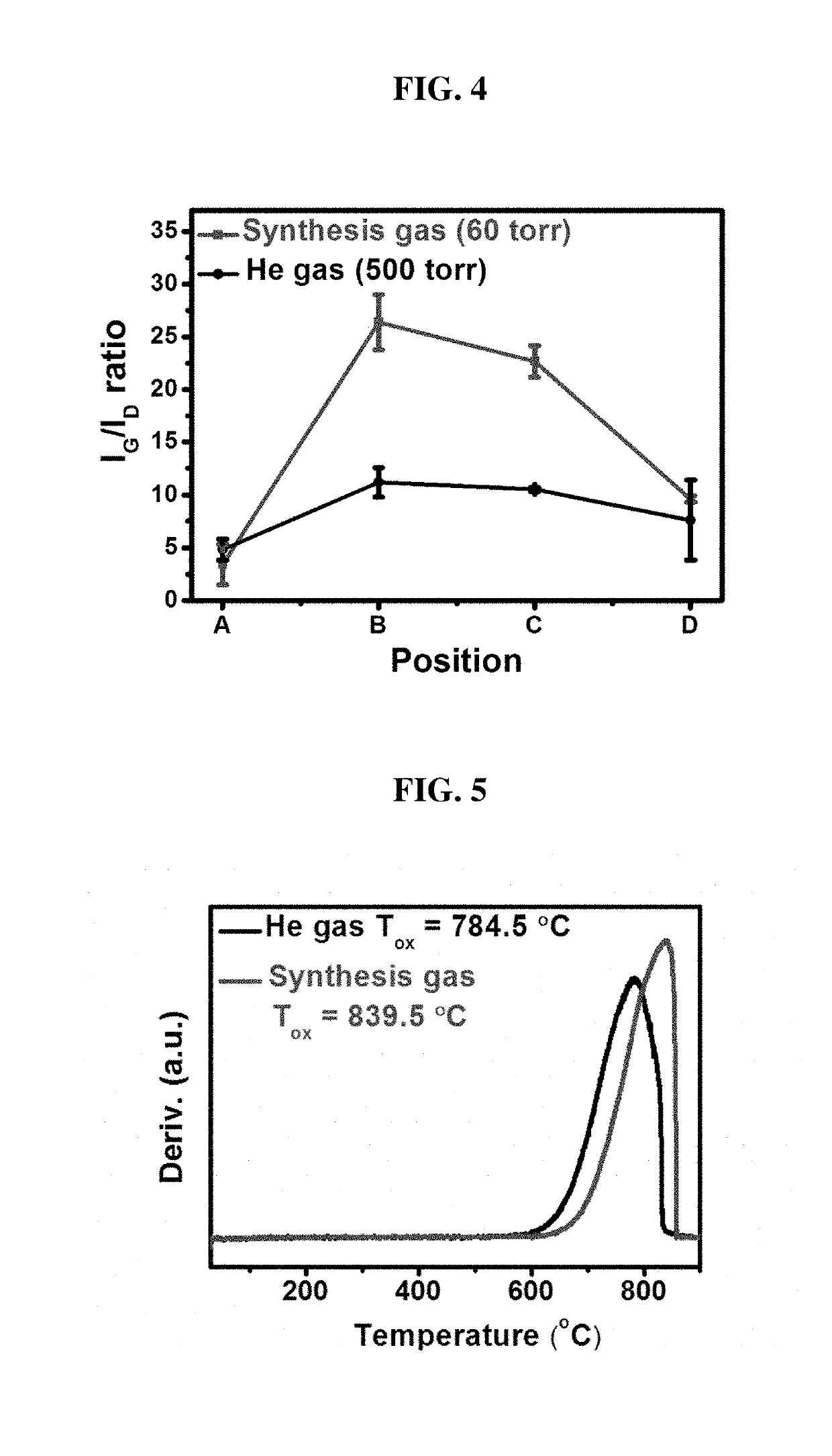Method of manufacturing carbon nanotubes using electric arc discharge
a technology of carbon nanotubes and electric arcs, which is applied in the direction of carbon compounds, inorganic chemistry, nano-carbons, etc., can solve the problems of limited mass production, uneven cnt characteristics or shapes, and thermal electron emission, and achieve high oxidation peak temperature, high crystallinity, and high temperature to cnts
- Summary
- Abstract
- Description
- Claims
- Application Information
AI Technical Summary
Benefits of technology
Problems solved by technology
Method used
Image
Examples
embodiment
[0028]FIG. 1 is a schematic view to explain manufacturing CNTs according to a preferred embodiment of the present inventive concept.
[0029]Referring to FIG. 1, a cathode 110 and an anode 120 are provided in a chamber.
[0030]The graphite used as the cathode 110 preferably has a cubic shape and is configured to synthesize CNTs on four surfaces of the graphite cube. Particularly, it is preferable to synthesize CNTs on one of the four surfaces of the graphite cube used as the cathode 110, then to terminate the CNT synthesis, and then to rotate to the next surface to synthesize the CNTs again. The graphite used for the cathode 110 is pure graphite G347 having an oxidation temperature of 735.3° C. and a crystalline evaluation index IG / ID of 1.5. A He—Ne laser having a wavelength of 633 nm is used for the crystallization evaluation. IG in the crystalline evaluation index IG / ID is the intensity of a peak that is generated around 1580 cm−1 by an in-plane phonon mode with a momentum of zero at ...
production example 1
sing Synthesis Gas
[0036]FIG. 2 is a digital camera image and a cross-sectional schematic view of CNT aggregate manufactured according to Production Example 1 of the present inventive concept.
[0037]Referring to FIG. 2, a pure graphite G347 rod having a length of 150 mm and a diameter of 8 mm is used as an anode, and a pure graphite G347 cube having a size of 100 mm×100 mm×100 mm is used as a cathode 110. The distance between the anode and the cathode 110 is kept constant at about 2 mm
[0038]A voltage between both electrodes is set to 20V to 25V, and the arc discharge is generated in a constant current mode of 80 A. During the arc discharge, the synthesis gas contains N2 and O2, the partial pressure ratio of the supplied N2 gas and the O2 gas is 9:1, and the chamber pressure of 60 torr is maintained. Arc discharge synthesis of CNTs is performed for 10 minutes.
[0039]When an arc discharge is generated between both electrodes by a voltage applied as described, carbon particles produced fr...
production example 2
Pressure Condition For Synthesis Of CNTs Using Arc Discharge In Air
[0055]FIG. 6 is SEM images showing CNTs manufactured by controlling the pressure of synthesis gas in a chamber according to Production Example 2 of the present inventive concept.
[0056]The CNTs shown in FIG. 6 are synthesized using the same graphite material for the cathode and the anode, and the same distance between both electrodes disclosed in FIG. 2. However, the chamber pressure of air is changed from 60 torr to 180 torr. In this production example, the crystallinity of the CNTs is evaluated according to the change of chamber pressure. Accordingly, it is possible to set an optimal chamber pressure in the present inventive concept.
[0057]Referring to FIG. 6, a pure graphite G347 rod having a length of 150 mm and a diameter of 8 mm is used as an anode, and a pure graphite G347 cube having a size of 100 mm×100 mm×100 mm is used as a cathode. The distance between the anode and the cathode is kept constant at about 2 m...
PUM
 Login to View More
Login to View More Abstract
Description
Claims
Application Information
 Login to View More
Login to View More - R&D
- Intellectual Property
- Life Sciences
- Materials
- Tech Scout
- Unparalleled Data Quality
- Higher Quality Content
- 60% Fewer Hallucinations
Browse by: Latest US Patents, China's latest patents, Technical Efficacy Thesaurus, Application Domain, Technology Topic, Popular Technical Reports.
© 2025 PatSnap. All rights reserved.Legal|Privacy policy|Modern Slavery Act Transparency Statement|Sitemap|About US| Contact US: help@patsnap.com



